ELECTRIC TRANSPORT AND LOCOMOTIVE ENGINEERING
In the history of the progress of the department, starting from the moment of its creation, three stages can be conditionally distinguished. The first stage – steam locomotive construction, lasted from 1892 to 1955. The second stage – diesel locomotive construction, covers the years from 1955 to 1998. And the third stage – modern, starts from 1998.
Stage of steam locomotive construction
Steam locomotive construction began in 1834. In 1860, 187 steam locomotives were produced at two factories. In the next 10 years, another 40 locomotives were built. From 1870 to 1900, steam locomotive construction was formed into an independent branch of production. In 20 years, 7,678 locomotives were produced. In 1897, the first two steam locomotives were produced at the Kharkiv Steam Locomotive Plant – the first specialized enterprise in the country. At the end of the 1890s, a second specialized factory was also created – the Luhansk factory, which produced its first 48 locomotives in 1900. The need of these enterprises for personnel of mechanical engineers of railway transport is the reason for the beginning of training since 1892 at the Kharkiv Technological Institute of Steam Locomotive Engineers.
Professor P. M. Mukhachov is the founder of the field of training of such specialists.
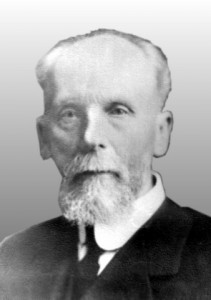
Mukhachev Petro Matviyovych born February 27, 1861. After graduating from the Institute of Technology in 1883, he served four years as a mechanic. In 1887, at the invitation of the director of the KhPTI V. L. Kirpychov, P. M. Mukhachov took up the position of a teacher here. In 1888, he visited foreign factories for the first time and began reading a course on factory machines and hydraulic structures. In 1892, he was appointed an adjunct professor of the Department of Mechanical Technology and received a 5-month foreign assignment to study steam locomotive construction. Director of the Kharkiv Institute of Technology, V. L. Kirpychev, in his letter to the Chief Trustee of the Kharkiv Educational District, justifies the need for this business trip as follows: “Most [graduates] who graduate from the mechanical department go to work on the railways, and the demand, given the current state of affairs, is ensured for a long time”. This is confirmed by the table given in the same letter:
|
Academic years |
1889–1890 | 1890–1891 | 1891–1892 | 1892–1893 | 1893–1894 |
| The number of those who design locomotives | 0 | 0 | 12 | 13 | 17 |
| The number of those who design factories | 6 | 9 | 1 | 8 | 6 |
V. L. Kirpychev gave the following description of P. M. Mukhachov to the ministry: “Among the educational staff of the institute, technological engineer Mukhachov deserves attention, who has been teaching factory machines and hydraulic structures at the institute for two years, and also manages projects of the 4th and 5th courses. P. M. Mukhachov’s excellent theoretical training, the practical knowledge he gained during his service at factories and his talent as a lecturer are a guarantee of success when reading the steam locomotive course and conducting projects from this department”.
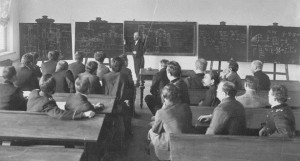
by professor P. M. Mukhachov
Since 1892, P.M. Mukhachev began to give lectures on the “Course of theory and construction of steam locomotives” in the 5th year. In 1895, he received the title of professor at the Department of Applied Mechanics for writing the book “Steam locomotives of ordinary broad-gauge roads”. Knowledge of several foreign languages (German, French, English), numerous trips abroad, during which P. M. Mukhachov thoroughly studied steam locomotive construction, forging and stamping, and metallurgical production, made him a professor of wide erudition in the field of mechanical engineering.
In 1905, P.M. Mukhachov was elected to the post of director of the Kharkiv Institute of Technology, where he remained until 1915. In 1912, after 25 years of service at the same higher educational institution, he received the title of Honored Professor.
In 1917, P. M. Mukhachov retired after serving his years and until 1920 he taught at the Kharkiv Railway Technical School, and from 1917 to 1923 he taught special subjects in many higher educational institutions of Kharkiv. In 1920, he again worked at the Kharkiv Institute of Technology (KhTI). At that time, his student, professor V. V. Monich, was in charge of the locomotive engineering department. From 1929 to 1935, Professor P. M. Mukhachev was again the head of this department.
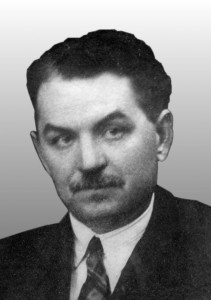
V. V. Monich
Monich Vasyl Vasyliovych in 1909 he graduated with honors from the Khti Institute, received the title of technological engineer and was sent to work at the Luhansk Steam Locomotive Plant. However, he turned to the director of the Khiti University with a request to leave him as a “scholar at the institute to prepare for the professorship.” In the following year, his request was granted. From 1911 to 1913, V. V. Monich was on a business trip to Germany, where in the following year he published two works on steam locomotive construction: “Direct steam engine” and “Theoretical study of steam locomotive carriages from the side of reverse force.” Since 1913, he has been enrolled in the staff of Khti as a teacher. In 1915, he defended his thesis at the Kyiv Polytechnic Institute for the title of adjunct in applied mechanics in the department of steam locomotives. Since 1917, V. V. Monich has been teaching the course “Operation of steam locomotives” at Khti. In 1918–1919, he was an associate professor at Khti, and in July 1920, he became a professor, head of the department of steam locomotives.
It should be noted that the name “Department of Steam Locomotive Engineering” was first encountered in a memo dated July 1920, which is in the personal file of Professor V.V. department of steam locomotive engineering”. The second official mention of the department as a structural unit was found in the case of P. M. Mukhachov in an extract from protocol No. 105 of the College of Ukrglavprofobras dated August 4, 1923, which testified: “The leadership of the department remains, as before, under Comrade Monich. The main course is taught, as before, by Mr. Monich, and Mr. Mukhachov, as a freelance professor, reads an independent course and manages an independent project group.” In P. M. Mukhachov’s “Service Form List” (an analogue of a modern personnel record), which was filled out in detail from 1887 to 1917, the Department of Steam Locomotive Engineering was never named. A similar picture can be found in the form list about the service of Professor V. V. Monich until 1918 – the dates when the information is cut off. So, unfortunately, we are not yet able to name the exact date of establishment of the Department of Steam Locomotive Engineering as a structural subdivision of the institute. Here we can only talk about 1892 as the time of the beginning of training at the Kharkiv Technological Institute of Steam Locomotive Engineers.
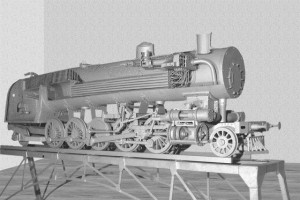
P. M. Mukhachev was a brilliant teacher. Conducting classes at a high theoretical level, he was able to convey complex technical issues in a clear and easily accessible form. The drawings made by Professor P. M. Mukhachov made a particularly strong impression. Everyone knew with what artistic talent he conveyed the complex designs of machines in all the smallest details.
P. M. Mukhachov has books that are excellent in terms of content and presentation, both in the field of steam locomotive construction and in the field of various factory machines: “Course of factory machines. Rolling mills” (1890); “Course of factory machines. Mechanisms for processing metals” (1894); “Theory and design of steam locomotives of ordinary broad-gauge roads” (1895); “Machines of metallurgical industries” (1899); “Machines for processing metals in a heated state” (1899); “Machines of metallurgical industries. Hammers and forging presses” (1902); “Rolling mills” (1902); “Course of steam locomotives” (1905); “The theory of steam locomotives. General course” (1912); “Lectures on Mechanics” (1914); “General Course of Heat Engines” (1922); “Steam locomotives”: 2 volumes with an atlas (1927); “Simple Machines” (1928); “Regulation of steam engines” (1931).
In P. M. Mukhachov’s books, a deep and comprehensive presentation of theoretical issues was combined with a beautiful literary style. In fact, they were encyclopedic publications of that time on the theory and constructions of steam locomotives.
P. M. Mukhachov trained many engineers for industry. One of them was the director, chief designer of the Luhansk Steam Locomotive Plant P.A. Soroka, a graduate of 1932. Among the students of P.M. Mukhachov were professors of higher educational institutions: O. S. Raevsky, V. V. Monich, M. I. Kartashov , P. M. Sharoyko, S. M. Kutsenko.
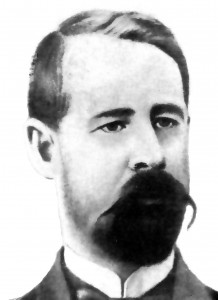
O.S. Rajevskyi
Oleksandr Serhiyovych Raevskyi in 1895 he graduated with honors from Khiti University, worked until 1910 at the Kharkiv Steam Locomotive Plant, first as a designer in general mechanical engineering, machine tool construction and crane construction, and then as assistant chief and head of the locomotive technical office, where he designed and built two series of freight locomotives and one – a passenger locomotive. O. S. Rajevsky developed projects of three types of diesel locomotives with direct, pneumatic and combined power transmission systems. But the government did not provide financial support for the implementation of these projects.
From 1910 to 1924, O. S. Rajevskyi worked as the head of the locomotive design bureau. Here he designed more than 20 types of steam locomotives of various capacities and purposes with interchangeable units and parts, which were designed to replace the aging fleet of steam locomotives produced from 1901 to 1917 – 13,475 such steam locomotives. O. S. Raevsky, having developed many scientifically based sections of the theory of locomotives, moved away from the existing practice of their design according to empirical formulas and “principles of similarity of the model”. Thus, he put the design of locomotives on a scientific basis.
From 1919 to 1924, Professor O. S. Raevsky taught at the Polytechnic Institute at the Mechanical Faculty and headed the Department of Locomotive Theory and Construction. He worked on the issues of the interaction of the track and the rolling stock, studied these issues using the example of bridges.
In 1920-1921, the scientist J. Gakkel developed a project of one of the world’s first diesel locomotives based on the power transmission scheme “diesel-generator-traction motors”, which has become a classic. The undercarriage and body of this diesel locomotive were designed by O. S. Raevsky in 1923.
On June 20, 1924, O. S. Raevsky died tragically during such tests. In 1925, one of the avenues was renamed in honor of Raevsky.
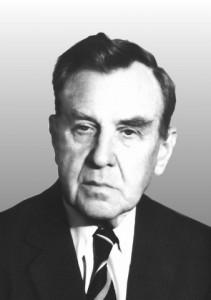
S. M. Kutsenko
Further progress of the department is connected with the name of Serhiy Mitrofanovich Kutsenko. He was born on October 14, 1907 in the city of Sloviansk. From 1923 to 1929, he was a student of the mechanical department of the Kharkiv Transport and Traction Institute, where, having defended his diploma thesis “Passenger Steam Locomotive”, he received the qualification of a mechanical engineer of railway transport. Since 1931, S. M. Kutsenko has been a graduate student of the Department of Steam Engines of the Kharkiv Institute of Transport Engineers (KhIIT). In 1933, he started working at the Kharkiv Mechanical Engineering Institute (KhMMI) at the Department of Steam Locomotive Construction. In 1934, under the scientific supervision of Professor P. M. Mukhachov, he defended his candidate’s thesis on the topic “The influence of thermosiphons on the operation of steam locomotive boilers” and in 1935 he was approved as an associate professor of the “Steam locomotives” department. Since 1935, he has been appointed head of the Department of Steam Locomotive Construction of KhMMI. S. M. Kutsenko supervises the training of graduate students F. N. Mamin, A. S. Nikolayenko, V. A. Ignatenko, and A. P. Kostyuk.
During World War II, S. M. Kutsenko was mobilized and served in the railway troops. Duties of the head of the Department of Steam Locomotive Construction of KhMMI, which was evacuated, were performed by Associate Professor D. L. Chernyavskyi.
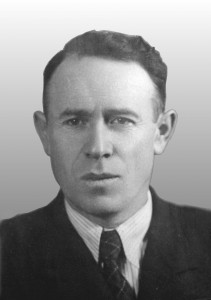
D. L. Chernyavskyi
Chernyavskyi Davyd Lvovych was born on June 13, 1907 in the town of Zenkiv, Poltava Region. From 1927 to 1931 he studied at KhMMI at the Department of Steam Locomotive Engineering. After defending his thesis, he received the title of mechanical engineer in steam locomotive construction. In 1940, he defended his candidate’s thesis “Clarification of issues of geometric and dynamic fitting of steam locomotives in a curve and fitting of steam locomotives with single-axle bogies.” From 1938 to 1941, he worked as an associate professor at the Department of Steam Locomotive Engineering. From 1941 to 1946 he served as the head of this department. Subsequently, his scientific interests included calculations on the strength of diesel locomotive shell bodies. The bodies of diesel locomotives TE10, TE109, 2TE121, 2TE136, etc. were calculated according to the methods developed by him. Worked at KhPI until 1986.
The stage of diesel locomotive construction
The beginning of the industrial production of diesel locomotives dates back to 1944, when the Kharkiv Steam Locomotive Plant was transformed into a diesel locomotive – Kharkiv Transport Machine Building Plant named after Malysheva (KhZТМ), which became the base for the organization of thermal power generation in the country.
In 1946, the first diesel locomotive TE1 was produced, the prototype of which was diesel locomotive DА with a power of 735 kW manufactured by the ALCO company, which was delivered from the USA on a lend-lease basis in a batch of 120 units. A year later, in 1947, the TE2 two-section locomotive was produced. In the period from 1953 to 1955, the production of two-section diesel locomotives TE3 with a capacity of 1470 kW per section was established. Then, the production of main line diesel locomotives was established at the Luhansk Plant.
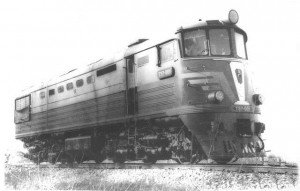
At the same time, the Department of Steam Locomotive Construction of KhPI is developing an actual scientific and educational direction – diesel locomotive construction. Under the leadership and with the direct participation of associate professor S.M. Kutsenko, programs of new courses “Theory and design of diesel locomotives”, “Dynamics of diesel locomotives”, “Piston engines” and others are being created, which are approved as basic for the training of diesel locomotive engineers. In 1955, the Department of Steam Locomotive Construction was renamed the Department of Locomotive Construction.
The teaching of special disciplines was based on extensive research work on the creation of TE3 and TE7 diesel locomotives, which was carried out jointly with KhZTM. The main types and parameters of the running parts of these diesel locomotives were selected on the basis of theoretical, calculation and experimental works performed by S. M. Kutsenko. On the basis of these works, in June 1956, S.M. Kutsenko defended his doctoral thesis on the topic “Research on the dynamics of locomotives”, in which a new concept of the spatial fit of the locomotive in the curve was obtained on the basis of mathematical modeling of the oscillatory processes of the locomotive structure. This became a significant contribution to the theory of the dynamics of the interaction of the locomotive with the rails.
The obtained theoretical provisions found their development in such farm contract works as “Supports and connections of the body with trolleys”, “Pneumatic suspension”, “Elastic support of motors on an axle”, “Rubberized wheel pairs” and others. The results of these works were implemented on serial or experimental diesel locomotives. At this time, the department organized a branch laboratory of locomotive construction, which, within the framework of commercial contracts with locomotive factories, participated in the creation of the TEM7 diesel locomotive for shunting work, the main freight locomotives 2ТЕ10Л and 2ТЕ116, passenger TEP60 and TEP70, as well as more than ten experimental diesel locomotives of various series. Proposals are submitted for the creation of a locomotive with a nuclear reactor, a gas turbo locomotive and a diesel turbo locomotive on liquefied gas.
The period of the 1950s–1970s was a period of rapid development of locomotive engineering and the locomotive engineering department of KhPI. Many graduates of the department in those years became managers of leading enterprises in the industry. Thus, the following people worked at the Luhansk Diesel Locomotive Plant in different years: N. A. Turyk (graduated in 1939) – director, chief designer; S. P. Filonov (graduated in 1952) – chief designer; P. M. Shevchenko (graduated in 1960) – chief engineer, Candidate of Technical Sciences, Honored Mechanical Engineer of Ukraine; K. P. Mishchenko (graduated in 1961) – chief designer, laureate of the State Prize of Ukraine, Honored Railwayman of Ukraine. At the Malyshev Kharkiv Plant: V. M. Zayonchkovsky (graduated in 1962) – chief designer of diesel locomotives, doctor of technical sciences, professor, laureate of the State Prize, Honored Worker of Science and Technology of Ukraine; V. M. Sobol (graduated in 1960) – Deputy General Director for Research and Development, candidate of technical sciences, laureate of the State Prize, Honored Worker of Science and Technology, Honored Inventor of Ukraine. V. A. Savin (graduated in 1962) – Doctor of Technical Sciences, worked as the General Director of the Riga Carriage Plant. A. S. Yevstratov (graduated in 1955) – Doctor of Technical Sciences, L. A. Mikhalchuk (graduated in 1963) – Honored railway worker, worked as the chief designer and General Director of a diesel locomotive plant.
The department intensively trains highly qualified personnel. If in the period from 1935 to 1953, 6 people passed through the graduate school and the Institute of Candidates under the leadership of S. M. Kutsenko, and by 1953 4 candidate theses were defended, then in the period from 1962 to 1984, 35 candidates of sciences were prepared. From 1963 to 1974, E. P. Elbaev, I. P. Karpov, V. L. Dobrovolskyi, V. G. Masliev, and A. I. Bleicher defended their dissertations and made up the core of the teachers of the locomotive engineering department. V. K. Belov, A. F. Kyrychenko, V. P. Pysarev and V. M. Velykodny joined the teaching staff of other KhPI departments. Later, graduates of the department A. F. Kyrychenko, A. M. Krasnokutskyi, V. P. Pysarev and V. G. Masliev became doctors of technical sciences and professors.
S. M. Kutsenko’s monographs are: “Dynamics of steady movement of locomotives in curves” (1975), “Pneumatic spring suspension” (1978), “Control and transient process in the thermo-electromechanical system of a diesel locomotive” (1982). He published the results of his scientific and pedagogical activities in more than 100 articles and dozens of patents for inventions.
S. M. Kutsenko saw the future of locomotive building in the widespread use of electrical engineering achievements.
From 1988 to 1998, the department was headed by Associate Professor V.L. Dobrovolsky, and then associate professor V.G. Masliev. To the fate of these worthy students, S.M. Kutsenko did not have the best times in the status of the industry, education and the country.
The fact is that after the implementation in 1971 of the 2ТЕ116 freight mainline diesel locomotive and in 1973 of the TEP70 passenger diesel locomotive with progressive AC-DC power transmissions at the time, new technical solutions were needed for further development, requiring improvement and organization of production. However, the huge locomotive industry, due to its scale, inertia and insufficient financing due to the use of a large part of the country’s budget for the military industry, began to lag uncontrollably behind the achievements in this field of technology of advanced countries. This concerned, first of all, the re-equipment of production facilities with high-precision metalworking complexes, the use of new materials, electrical products and information and computing equipment. While in Japan, France and Germany, by adapting technical achievements in the field of aviation and cosmonautics to railway transport, they obtained capacities per unit of production of serial locomotives of more than 5 MW, at our factories such capacities were approached only on experimental samples.
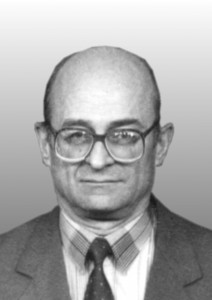
V. L. Dobrovolskyi
The scientific and technical progress was hampered by the administrative and command system, which, penetrating the spheres of scientific and technical activity, restrained creative initiative and enthusiasm, forcing all levels to work not on the search for new technological solutions, but “to do things against oneself.” The prestige of engineering work was falling and, as a result, there were problems with the recruitment of students. Individual enterprises and scientific institutions of the industry turned out to be isolated and actually dying. The technology of personnel training according to the schemes, which arose from the specific need of the country’s industry for certain specialists, lived out itself, but still existed due to inertia. The situation with the distribution of graduates and recruitment of students has become even more complicated. Under these conditions, V.L. Dobrovolskyi worked as the head of the department, and later – V.G. Masliev.
From 1988 to 1993, the locomotive engineering department was headed by Dobrovolskyi Vladyslav Leonidovych. In 1960, he graduated from KhPI. He started working as a design engineer of the Luhansk Diesel Locomotive Plant and a research engineer. In 1964, he entered the postgraduate course of KhPI and in 1969 defended his candidate’s thesis on the topic “Investigation of vertical vibrations of locomotives excited by working mechanisms.” While working as the head of the department, he paid a lot of attention to the computerization of the educational process, equipped the department with state-of-the-art for that time personal computers of DVK and Iskra.
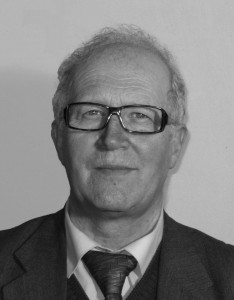
V. G. Masliev
Masliev Vyacheslav Georgiyovych headed the department since 1993. In 1960, he graduated from KhPI. Performed project work in the department of the Chief Designer of the Luhansk Locomotive Plant, later conducted scientific research in the industrial laboratory of KhPI as a senior engineer, deputy scientific head of the laboratory. He chose the dynamics of rail transport as the scientific direction of his activity. In 1970, he defended his candidate’s thesis “Study of the dynamics of elastic and rigid suspension systems of electric engines of steam locomotives”, where he theoretically and experimentally proved the advantages of elastic drives of locomotives. The results of the work contributed to the introduction of elastic drives on diesel locomotives 2ТЕ116, 2ТЕ121, 2ТЕ126 and others.V. G. Masliev maintained ties with the KhZTM named after Malyshev and Luhansk teplovozobudovniy both in the form of business contracts and by involving highly qualified scientists and practitioners in the educational process (V.M. Zayonchkovsky, I.A. Rak, etc.). By this time, having published more than 70 scientific articles, including the monograph “Pneumatic spring suspension”, as well as having 15 copyright certificates for inventions, V.G. By 1998, Masliev formed the core of his doctoral dissertation.
Modern stage
Since the beginning of the 1990s, Ukraine has experienced problems regarding electric railway transport as a combination of electric rolling stock and power supply systems. Of the 22,000 kilometers of railways on its territory, 44% are electrified and 85% of transportation is carried out on them. Electric locomotives were created in Czechoslovakia, motorcar trains (electric trains) – at the Riga Carriage Works. In Ukraine, the Dnipro Electric Locomotive Plant produced specialized electric locomotives for work in open quarries. Power supply specialists were trained by the Dnipro Institute of Railway Transport Engineers (DIIT).
As you know, the production of electric rolling stock is a combination of technological processes of two main profiles – machine-building and metalworking (production, processing and assembly of large body units, frames, trolleys, running parts and other metal structures from cast and rolled steel), as well as electrotechnical (production of electric machines and devices, including processing of ferrous and non-ferrous metals, devices of converting technology and control, electrical installation and other works).
Based on these circumstances, the management of NTU “KhPI”, taking into account the accumulated potential of electrical engineering faculties and departments, decided to open the “Electric Transport” specialty at the Department of Locomotive Engineering for the studying of bachelors and masters in the design, creation and operation of both electric rolling stock and power supply systems railways. As a result, starting in 1998, the department began to train specialists in two specialties: “Rolling stock and special equipment of railway transport” and “Electric transport”. In 1998, the department was named “Electric Transport and Diesel Locomotive Engineering”. In March 1998, Doctor of Technical Sciences, Professor V.I. Omelianenko was elected as the head of the department.
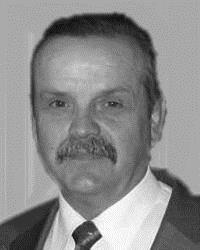
V. I. Omelianenko
Omelianenko Victor Ivanovych in 1966 he graduated from KhPI. He started working as an engineer in the office of electromagnetic calculations for the design of electric machines for diesel locomotives of the Research Institute of the Elektrovazhmash plant. Studied at the KhPI graduate school and in 1973 defended his candidate’s thesis on the topic “Theoretical and experimental study of the “zebra-likeness” of the collector of DC machines of limited power”, during which he conducted unique experiments on the traction generator with a capacity of 2000 kW of the 2TE10L diesel locomotive.
After that, V. I. Omelianenko took up the issues of creating a high-speed magnetic transport with electrodynamic levitation. His research interests include systems of electrodynamic suspension and guidance, linear electric motors and superconducting magnetic systems of magnetolevitating transport, as well as electromechanical energy accumulators. Under the leadership of V. I. Omelianenko, a series of superconducting magnets for magnetic levitating transport was created for the first time in country, as well as a 14-meter full-scale model of an electromagnetic catapult for dispersing ship-based aircraft. Research results were published in England, Germany, the USA, and Japan. His report in 1992 at the 5th International Symposium on Electromagnetic Systems in Sapporo was published by Elsevier. The 1994 report in Boston (MIT) about the world’s first niobium-tin superconducting magnet for transport was presented in co-authorship with specialists from the world’s leading scientific and technical centers – the Institute of Atomic Energy, the Institute of Aviation Materials. In 1985 and 1987, V. I. Omelianenko was awarded silver medals.


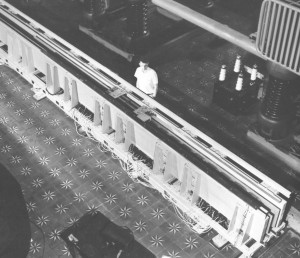
General appearance
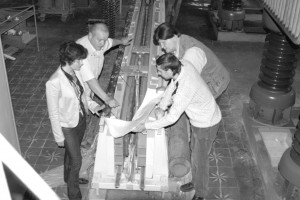
In 1995, V. I. Omelyanenko defended his doctoral thesis at the Institute of Electrodynamics of the National Academy of Sciences of Ukraine on the topic “Theoretical foundations of designing linear electromechanical energy converters with superconducting excitation windings”.
V. I. Omelianenko is the author of the monographs “Linear DC motors with a thyristor commutator” (1994), “High-speed electric transport. World experience” (2007). In 2001, the monograph “High-speed magnetic transport with electrodynamic levitation” was published in co-authorship with V. O. Dzenzerskyi, S. V. Vasiliev, V. I. Matin, and S. O. Sergeev. V. I. Omelianenko is the author of the textbook “Fundamentals of Electric Traction, Systems and Modes of Direct Current Traction Networks” (2002), more than 100 scientific articles and more than 20 patents for inventions. Trained 8 candidates of technical sciences.
At the beginning of research in this field, V. F. Bolyukh participated, who in 1986 defended his thesis for the degree of candidate of technical sciences on the topic “Development of superconducting magnets for linear electromechanical energy converters.” A significant contribution to these studies belongs to S. O. Sergeev. In 1993, he defended his candidate’s thesis on the topic “Analysis and comparison of units of electrodynamic suspension of the crew of high-speed ground transport.” Candidate theses were also defended in the direction of this scientific direction: R. M. Pokhodenko (1995) “Investigation of a direct current linear motor with a superconducting excitation winding” and L. I. Lysenko (1999) “Investigation of the limits of the use of a linear synchronous motor for unloading suspension systems of magneto-levitating transport” already under the scientific leadership of S. O. Sergeev.
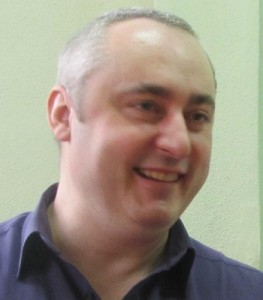
Since October 2018, has headed the department Lubarskyi Boris Hryhorovych.
Currently, the educational process is provided by: professors B. G. Lyubarskyi, V. I. Omelyanenko, V. G. Masliev; associate professors D.I. Iakunin, B.H. Yeritsyan, L.V. Over’yanova, E.S. Ryabov; Ph.D., senior teacher O.V. Demidov; head of the educational laboratory O.E. Vasylieva, Engineer of the 1st category M.Kh. Yeritsyan, master of production training E.P. Shnurkov, engineer of the 1st category I.E. Haustov.
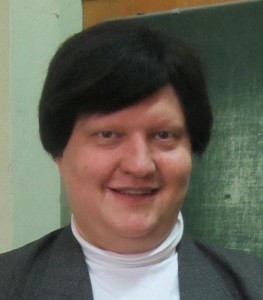 |
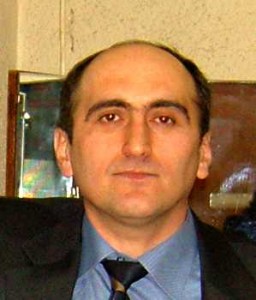 |
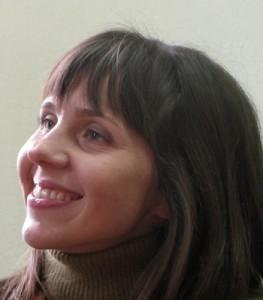 |
| D. I. Iakunin | B. Kh. Yeritsyan | L.V. Overyanova |
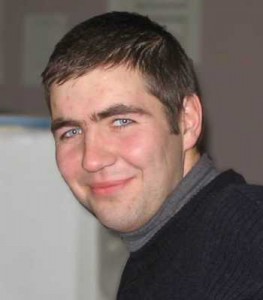 |
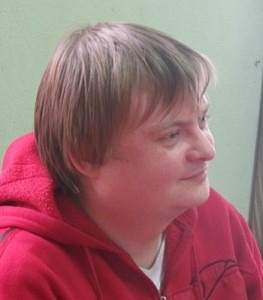 |
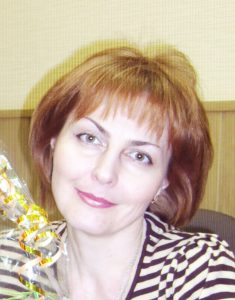 |
| E.S. Ryabov | O.V. Demidov | O.E. Vasilieva |
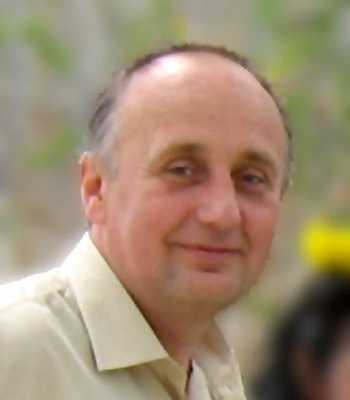 |
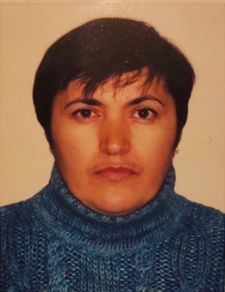 |
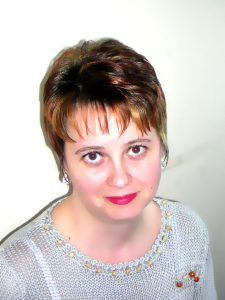 |
| E. P. Shnurkov | M. Kh. Yeritsyan | I. E. Khaustova |
Currently, the Department of Electric Transport and Thermal Engineering prepares specialists – bachelors, masters for the design, creation and operation of railway transport in two specialties:
- Electric transport (electric locomotives, electric trains, metro trains and their power supply systems);
- Locomotives and locomotive engineering (diesel locomotives, diesel trains, wagons).
Forms of education – Denna (bachelor’s degree – 4 years, master’s degree – 2 years on the basis of a bachelor’s degree or 1 year on the basis of a specialist); Correspondence and distance learning (bachelor’s degree – 4 years, master’s degree – 1.5 years on the basis of a bachelor’s degree).
The educational process at the Department of Electric Transport and Thermal Engineering is based on scientific research conducted in three directions: “Electromechanical energy conversion in promising rail transport”, “Resource- and energy-saving technologies of railway power supply” and “Dynamics of railway rolling stock and its interaction with the rail track” “.
On the basis of the department, there is a post-graduate course, a specialized scientific Council with the right to conduct dissertation defenses for obtaining the scientific degree of Doctor of Technical Sciences in the field of electrical transport was created and operated.


